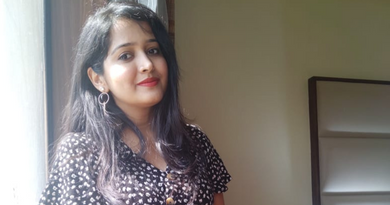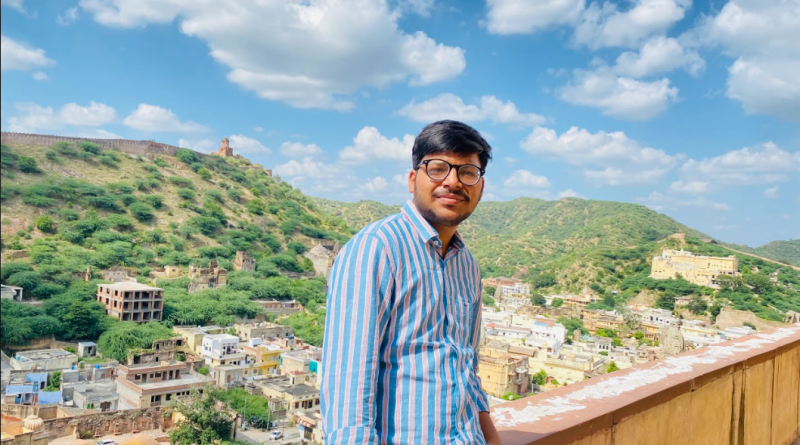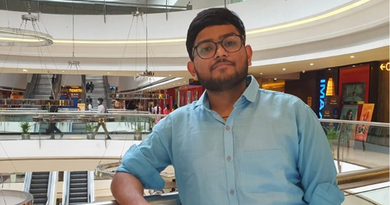Internship at Centre for Cellular and Molecular Biology – A closer view of research labs

About the Author: Sakshi Nandkumar Pawar, a student of Karamveer Bhaurao Patil College, Mumbai, talks about her venture into Immunology and the lessons she learnt during her internship.
It is rightly said that dreams transform thoughts into action. I wanted to work as a research intern at the Centre for Cellular and Molecular Biology (CCMB), a premier science research institute. So, I applied for the CCMB summer training by submitting an application form along with a write-up, a recommendation letter from the head of the department, and some other formal documents. Being interested in immunology, my write-up was on T cells which are the key cells involved in the immune system of animals. I included T cell plasticity, how these cells change and convert their subtypes, and the consequences of this interconversion – beneficial aspects and diseases caused by it. Fortunately, I was one of the eighty-four students selected for the internship. I believe this was a result of the improvements I had made in my statement of purpose and write-ups after being rejected from other research institutes.
I entered the CCMB campus with glistening eyes and carried out all the formalities. I wanted to learn everything I could since this was my chance of using my theoretical knowledge in practical scenarios. My project was under the supervision of the senior principal scientist, Dr. Tushar Vaidya, and a senior research fellow from that lab was appointed to mentor and guide me. In the department of immunology, I worked on genetical studies of B lymphocytes and Leishmania, a deadly blood pathogenic microorganism which causes Kala Azar. I was given a task to solve an experimental question for a project on cloning since the complete project needed more time than my internship duration. I worked on overexpression of Blimp1 which is a B lymphocyte maturation protein 1. I learned that cloning of a gene segment is done with the help of E.coli, a vector, and the copies are delivered to the desired B cells. I faced a lot of problem in obtaining good results but with constant troubleshooting, I finally accomplished it. The instruments were sensitive to even the slightest errors leading to faulty results. I made a lot of mistakes but my mentor, Mr. Devi Prasad, was always patient. I learned that one should do a detailed research before performing any experiment and realised that even the smallest mistakes can lead to huge problems.
Every Tuesday, we attended seminars led by principal scientists of each laboratory. In the lab, there were two particularly challenging places – the cold room where bacterial cultures and enzymes were preserved at a temperature of 4 degrees and the animal house where animals were used for lab experiments. I learnt to isolate B cells from the spleen of a mouse with proper dissection techniques. It was tough for me to cut that cute mouse. We had instrumentation visits to all the labs at CCMB along with lab meetings where all members of the lab presented their work or research papers. I presented a research paper by Freeman Lan on Single Cell Genome Sequencing with Barcode Droplet System. This was not a good experience for me since I didn’t present it well and was bombarded with a lot of questions only a few of which I could answer. The principal scientist told me that a research paper should be presented such that one can actually perform the stated experiment in a lab.
We visited LaCONES (Laboratory for the Conservation of Endangered species), a national lab for the conservation of threatened species and rare wildlife which also handles wildlife forensics, to attend a lecture and get an informatory view of their labs. We saw the operation theatre of leopard where artificial insemination of leopards was done to increase their number. We were told that artificial insemination was unsuccessful in leopards due to complex pregnancy cycles but it was successful in case of spotted deer and calves. The lab had developed and recorded sequences of about 250 different birds and animals as DNA banking. I also won the third prize in a life science quiz competition at CCMB. The days spent with friends, picnics in Hyderabad, cultural events and white ducks at the organisation, and the yummy food of the canteen made for some special memories. On the last day, we gave a presentation on our work, and I was appreciated for my confidence. It was a fun internship which made me realise that I needed to learn a lot and make the most of my days.
Do you also want to unfold the biological mysteries? Check out these cool biology internships.
Editor’s note – If you also have an interesting story to share, you can now participate in Your Internship Story Contest 2017 and win cash prizes and goodies worth INR 1 Lac!



